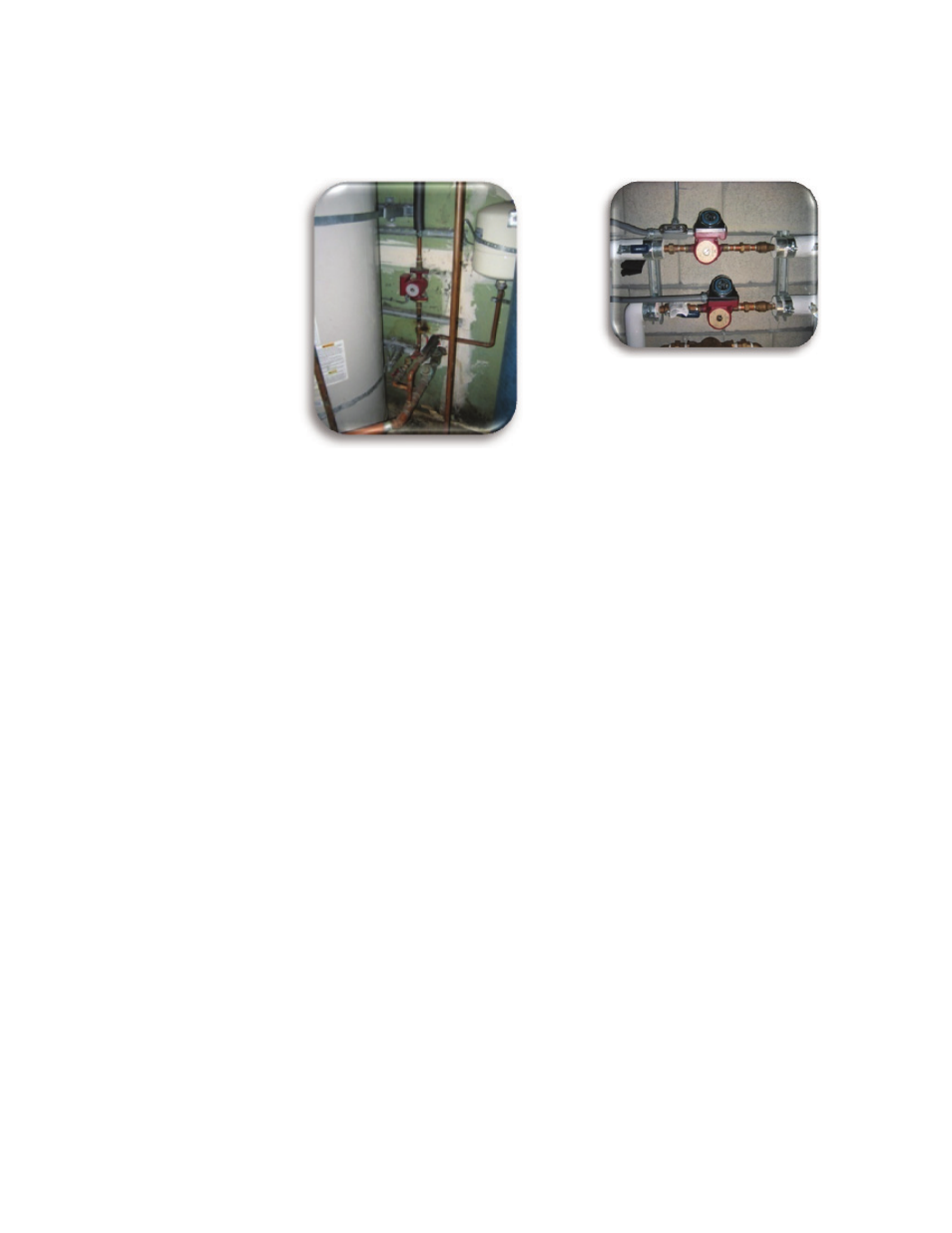Retrotec USACE User Manual
Page 272

D142 ENERGY & PROCESS ASSESSMENT PROTOCOL
D.7.10.15 Introduction of Cool Water into Water Heater from
Recirculation Line Results in Heating Energy Waste When Facility
Is Not Operating (Waste)
Figure D233. Water heater with a recirculation
line (left), recirculation pump with a timer
(right).
The hot water line recirculation pump is used to continuously prime a facility’s
hot water line with hot water to ensure that point sources are quickly supplied
with hot water at times of use (Figure D233). When those point sources are
not in use, however, operation of the recirculation pump is not necessary; it
serves only to introduce relatively cool water into the hot water heater. A rudi-
mentary time clock can be used to shut the pump off during idle hours. More
advanced pumps have built-in timers. Potential annual operating cost savings
range from $300 to $600.
D.7.10.16 Separate Ventilation Systems for a Dining Room and a
Kitchen
Using two separate, often independent ventilation systems for dining and
kitchen areas results in reduced amounts of outside air for the dining room,
with the most fresh air supplied in the kitchen. When untempered (not cooled
in summer) outside air is supplied to the kitchen as a makeup air, it compro-
mises thermal comfort in the kitchen (Figure D234).
Calculate the total requirement for outside air based on needs for the dining
room and the kitchen. Use of a dedicated outside air handling unit to pretreat
outside air for the whole building will reduce the total amount of supply air
and will reduce the moisture content in the air supplied into the kitchen from
the dining room. Use of transfer air from the dining room to the kitchen space
improves overall effi ciency of the HVAC system in cooling mode and provides
a comfortable environment in the kitchen (Figure D235).
